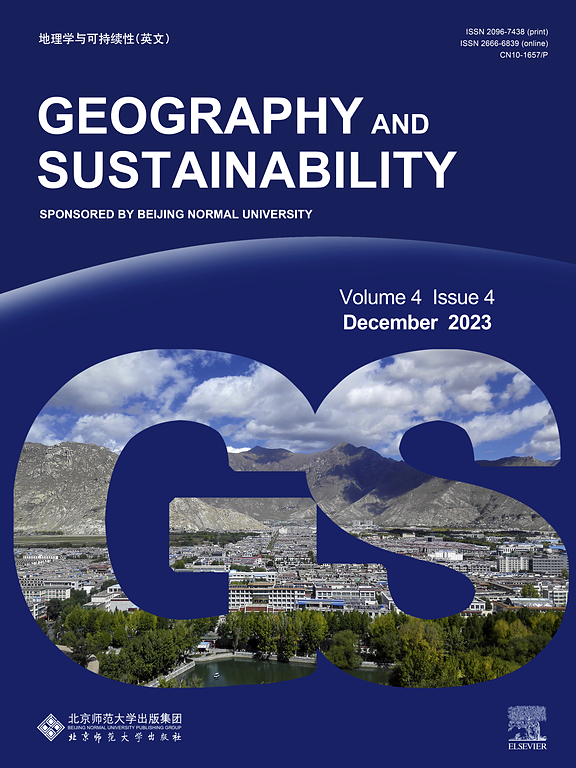Global urbanization indirectly ‘enhances’ the carbon sequestration capacity of urban vegetation
IF 8
1区 环境科学与生态学
Q1 GEOGRAPHY, PHYSICAL
引用次数: 0
Abstract
Urbanization radically alters the climatic environment and landscape patterns of urban areas, but its impact on the carbon sequestration capacity of vegetation remains uncertain. Given the limitations of current small-scale ground-based in situ experiments, the response of vegetation carbon sequestration capacity to urbanization and the factors influencing it remain unclear at the global scale. Using multisource remote sensing data, we quantified and differentiated the direct and indirect impacts of urbanization on the carbon sequestration capacity of vegetation in 508 large urban areas globally from 2000 to 2020. The results revealed that the direct impacts of urbanization were generally negative. However, 446 cities experienced an indirect enhancement in vegetation carbon sequestration capacity during urbanization, averaging 19.6 % globally and offsetting 14.7 % of the direct loss due to urbanization. These positive indirect effects were most pronounced in environments with limited hydrothermal conditions and increased most in densely populated temperate and cold regions. Furthermore, indirect impacts were closely related to urbanization intensity, human footprint, and level of urban development. Our study enhances the understanding of how the carbon sequestration capacity of vegetation dynamically responds to changes in the urban environment, which is crucial for improving future urban vegetation management and building sustainable cities.

全球城市化间接“增强”了城市植被的固碳能力
城市化从根本上改变了城市地区的气候环境和景观格局,但其对植被固碳能力的影响尚不确定。由于目前小规模地面原位试验的局限性,在全球尺度上植被固碳能力对城市化的响应及其影响因素尚不清楚。利用多源遥感数据,量化并区分了2000 - 2020年全球508个大城市城市化对植被固碳能力的直接和间接影响。结果表明,城市化的直接影响总体上是负面的。446个城市在城市化过程中植被固碳能力间接增强,全球平均增长19.6%,抵消了14.7%的城市化直接损失。这些积极的间接影响在热液条件有限的环境中最为明显,在人口稠密的温带和寒冷地区增加最多。间接影响与城市化强度、人类足迹和城市发展水平密切相关。本研究加深了对植被固碳能力如何动态响应城市环境变化的认识,对改善未来城市植被管理和建设可持续城市具有重要意义。
本文章由计算机程序翻译,如有差异,请以英文原文为准。
求助全文
约1分钟内获得全文
求助全文
来源期刊

Geography and Sustainability
Social Sciences-Geography, Planning and Development
CiteScore
16.70
自引率
3.10%
发文量
32
审稿时长
41 days
期刊介绍:
Geography and Sustainability serves as a central hub for interdisciplinary research and education aimed at promoting sustainable development from an integrated geography perspective. By bridging natural and human sciences, the journal fosters broader analysis and innovative thinking on global and regional sustainability issues.
Geography and Sustainability welcomes original, high-quality research articles, review articles, short communications, technical comments, perspective articles and editorials on the following themes:
Geographical Processes: Interactions with and between water, soil, atmosphere and the biosphere and their spatio-temporal variations;
Human-Environmental Systems: Interactions between humans and the environment, resilience of socio-ecological systems and vulnerability;
Ecosystem Services and Human Wellbeing: Ecosystem structure, processes, services and their linkages with human wellbeing;
Sustainable Development: Theory, practice and critical challenges in sustainable development.
 求助内容:
求助内容: 应助结果提醒方式:
应助结果提醒方式:


